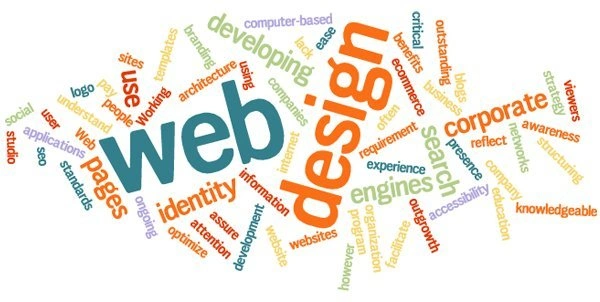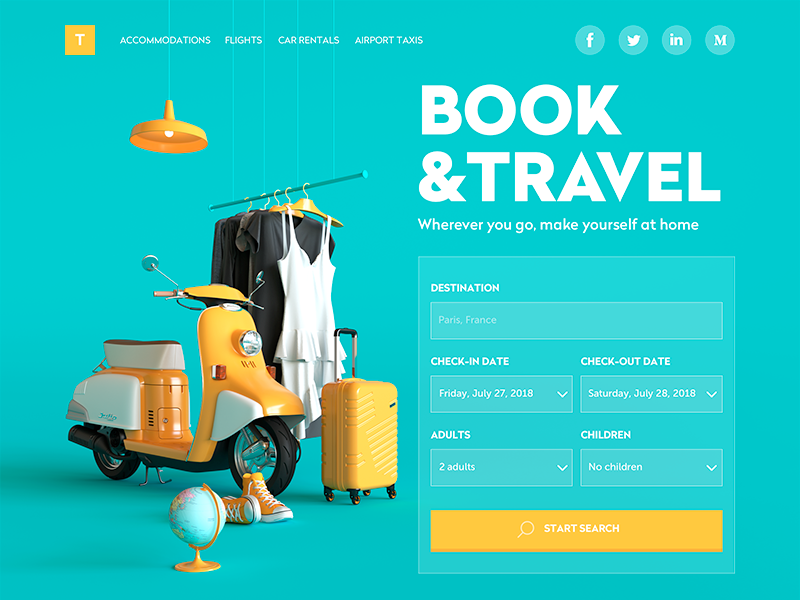Aligned Position Web Design: Comprehensive Web Design Solutions for Small and Large Businesses
Aligned Position Web Design: Comprehensive Web Design Solutions for Small and Large Businesses
Blog Article
The Most Effective Sorts Of Website Design to Enhance Customer Experience and Engagement
In the ever-evolving landscape of electronic communication, the efficiency of Web style significantly affects customer experience and engagement. Numerous layout strategies, such as minimalist, responsive, and interactive formats, each offer unique advantages that can provide to varied user demands.
Minimal Website Design
As electronic landscapes end up being progressively messy, minimalist Web style has arised as an effective strategy to improving customer experience. This design philosophy prioritizes simplicity, concentrating on essential components while getting rid of unneeded interruptions. By utilizing ample white area, uncomplicated navigating, and a limited color palette, minimal layout fosters quality and directs customer interest to key content.
The core concept of minimal Web style is to develop a smooth interaction for individuals. By minimizing cognitive tons, customers can promptly comprehend details without really feeling overwhelmed. This direct technique not only improves use yet also encourages engagement, as site visitors are more most likely to check out a site that is very easy and visually attractive to navigate.
Furthermore, minimalist layout commonly highlights typography and imagery, using these elements tactically to convey messages successfully. In essence, minimalist Web layout is not simply a fad; it is a thoughtful methodology that identifies the significance of user-centered design.
Receptive Website Design
In today's varied digital atmosphere, responsive Web design has come to be vital for creating a seamless customer experience throughout a multitude of gadgets. As customers access websites on smart devices, desktop computers, tablets, and laptops, the capacity of an internet site to adapt its layout and material to various screen dimensions and resolutions is crucial.
Responsive Web style utilizes adaptable grids, pictures, and CSS media queries to make sure that Web content exists optimally, regardless of the tool utilized. This strategy not just improves the aesthetic allure of a site but additionally significantly boosts usability. Individuals are most likely to involve with a website that provides a regular experience, as it removes the frustration of needing to zoom in or scroll excessively.
Moreover, internet search engine, including Google, prioritize mobile-friendly internet sites in search rankings. By taking on receptive design, organizations can improve their exposure and get to a wider target market. This approach additionally simplifies web site maintenance, as a solitary variation of the website can deal with all devices, minimizing the requirement for multiple variations. In summary, responsive website design is a basic technique that boosts customer experience, engagement, and general fulfillment.
Interactive Web Layout
Responsive website design prepares for improving user experience, however interactive Web layout takes this a step even more by engaging users in an extra dynamic way - Aligned Position Web Design. By incorporating elements such as animations, clickable prototypes, and real-time responses, interactive Web style astounds individuals, drawing them right into a richer surfing experience
This technique not just fosters involvement however additionally urges individuals to check out content proactively as opposed to passively eating it. Methods such as gamification, where users gain rewards for finishing jobs, can considerably improve the moment spent on a website and enhance overall contentment. Furthermore, interactive functions can streamline complicated information, making it a lot more digestible and pleasurable.

Incorporating interactive layout components can likewise lead to higher conversion prices, as customers are more likely to engage with a site that proactively involves them. Aligned Position Web Design. Ultimately, interactive Web design transforms customer experiences right into remarkable trips, ensuring that site visitors return time and once more
Apartment Layout
Characterized by its minimalistic strategy, flat style highlights simpleness and performance, removing unneeded elements and concentrating on necessary functions. This layout approach prioritizes functionality, guaranteeing that users can browse user interfaces effortlessly and performance. By employing a tidy visual, flat style removes the mess commonly located in a lot more elaborate designs, therefore enhancing user concentrate on material and capability.
The characteristic of flat layout lies in its usage of Related Site bold colors, easy typography, and geometric shapes. These components add to an aesthetically attractive user interface that is both modern and approachable. Additionally, flat layout cultivates a feeling of clearness, permitting users to recognize necessary activities and information without diversion.
In addition, flat layout is especially efficient in receptive Web layout, as its simplicity converts well throughout different gadgets and screen sizes. By concentrating on important attributes, flat layout not only meets customer needs but also urges seamless interaction, making it a vital part of effective Web layout techniques.
Adaptive Website Design
Adaptive website design personalizes the customer experience by producing numerous taken care of designs customized to various screen dimensions and devices. Unlike responsive style, which fluidly readjusts a single design, adaptive layout utilizes distinct layouts for certain breakpoints, making certain optimal presentation on numerous systems. This strategy permits developers to concentrate on the one-of-a-kind attributes of each tool, boosting use by supplying precisely what individuals require based upon their context.
Among the main advantages of flexible website design is its capacity to optimize load times and efficiency. By offering tailored material and images that fit the user's device, websites can minimize information usage and Learn More boost loading speeds. This is specifically valuable for customers with slower connections or limited information strategies.

Additionally, flexible layout helps with a much more regular and regulated branding experience. Given that designers produce numerous layouts, they can ensure that the visual aspects line up with the brand name's identity throughout various platforms - Aligned Position Web Design. This causes a natural individual experience, improving engagement and promoting individual retention
Conclusion
Finally, the assimilation of minimal, responsive, and interactive website design principles dramatically boosts individual experience and involvement. Minimalist design cultivates clarity and emphasis, while responsive design guarantees adaptability across numerous devices, advertising accessibility. Interactive style mesmerizes users through vibrant elements, urging exploration and personalization. Collectively, these design comes close to add to the production of user-friendly environments that not only improve contentment but likewise drive higher conversion rates, emphasizing their essential significance in modern Web design strategies.

Minimalist design promotes clarity and emphasis, while receptive layout guarantees adaptability throughout various gadgets, advertising access. Jointly, these layout comes close to contribute to the development of easy to use environments that not just enhance contentment but additionally drive higher conversion rates, underscoring their vital value in contemporary Web layout techniques.
Report this page